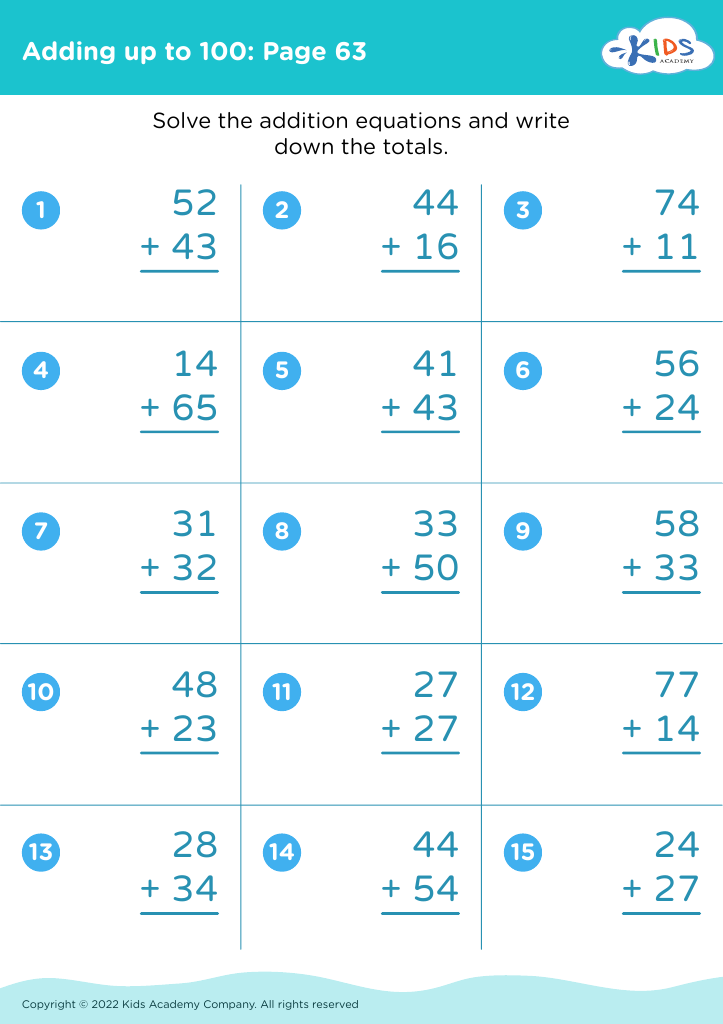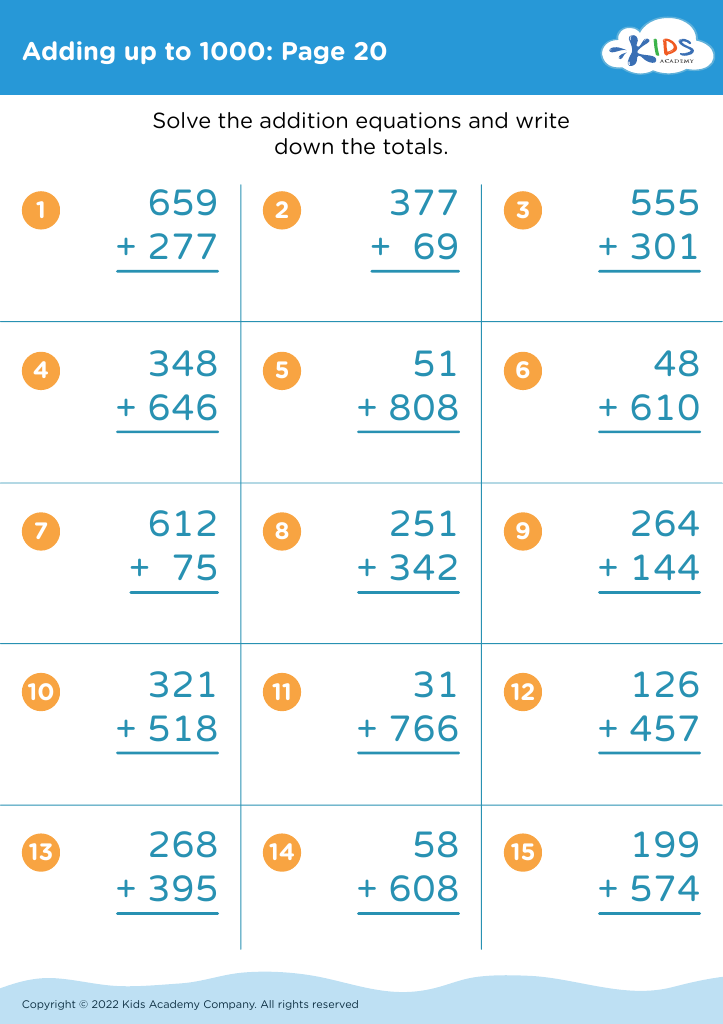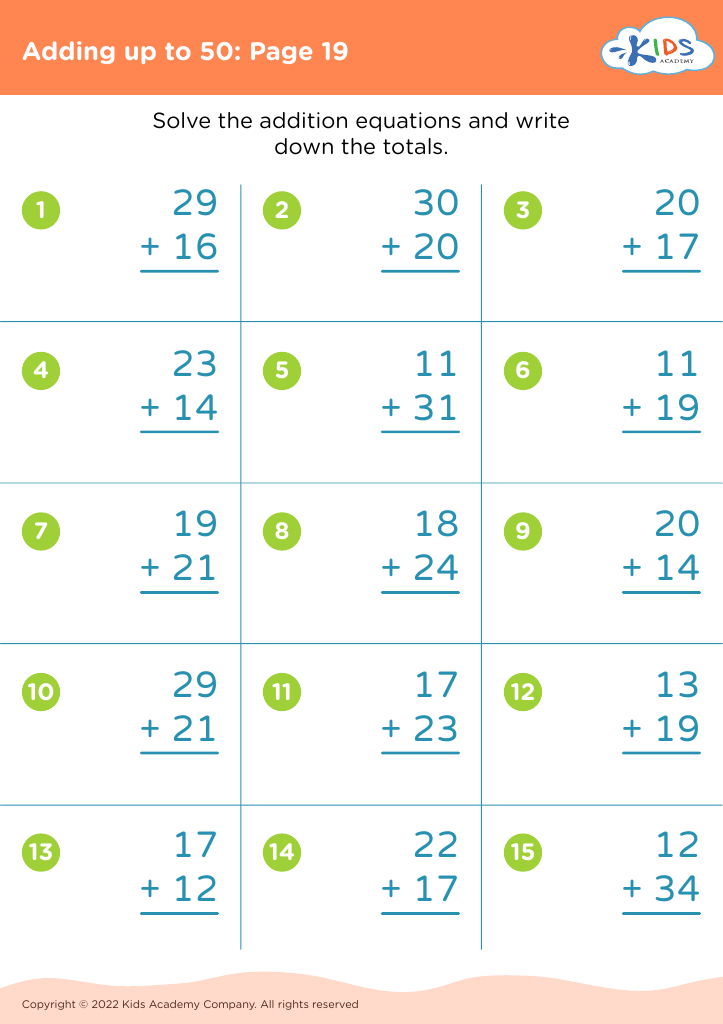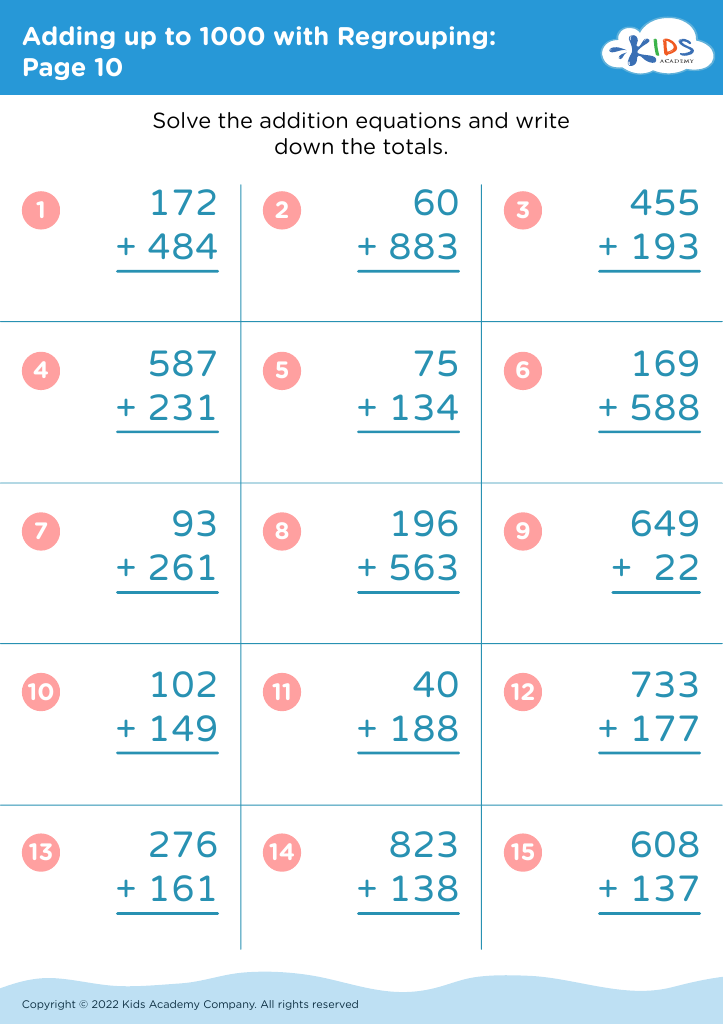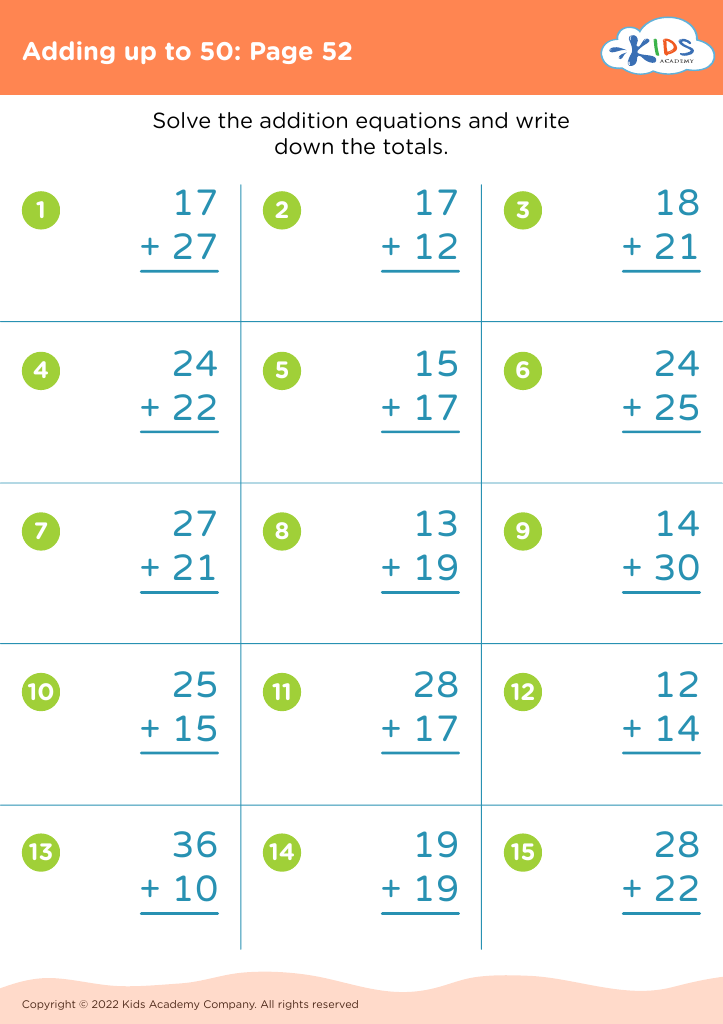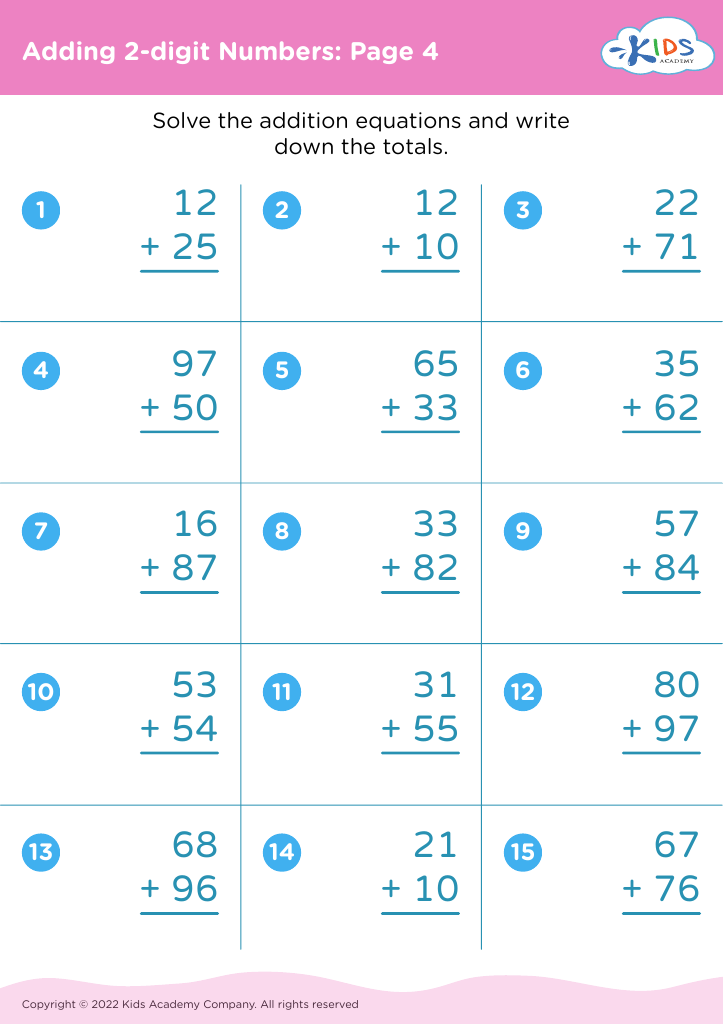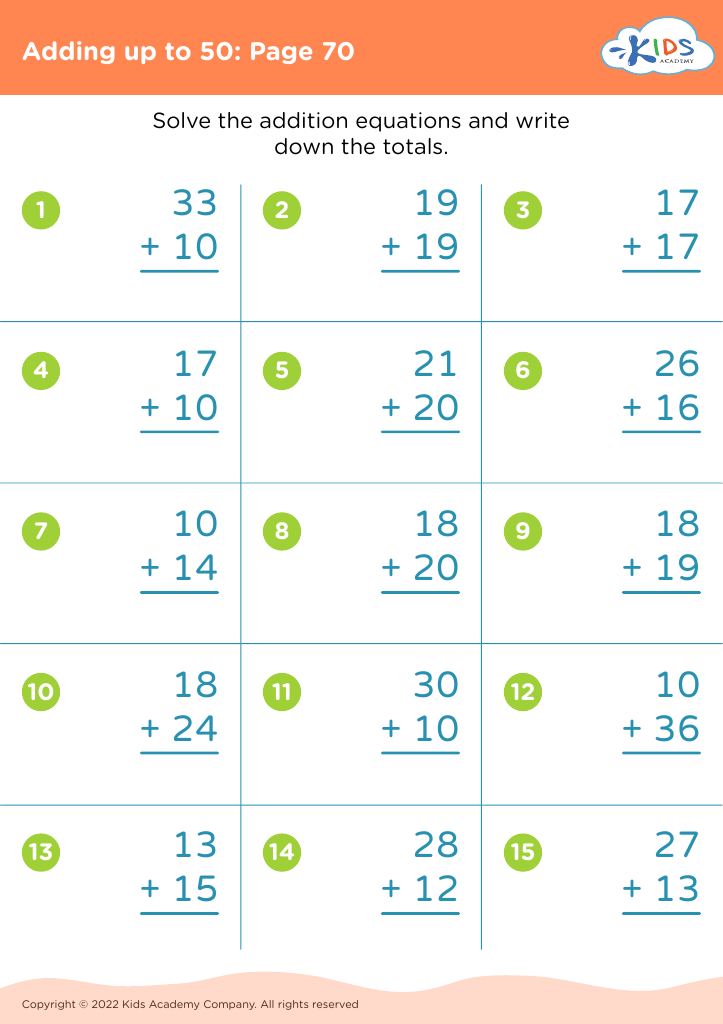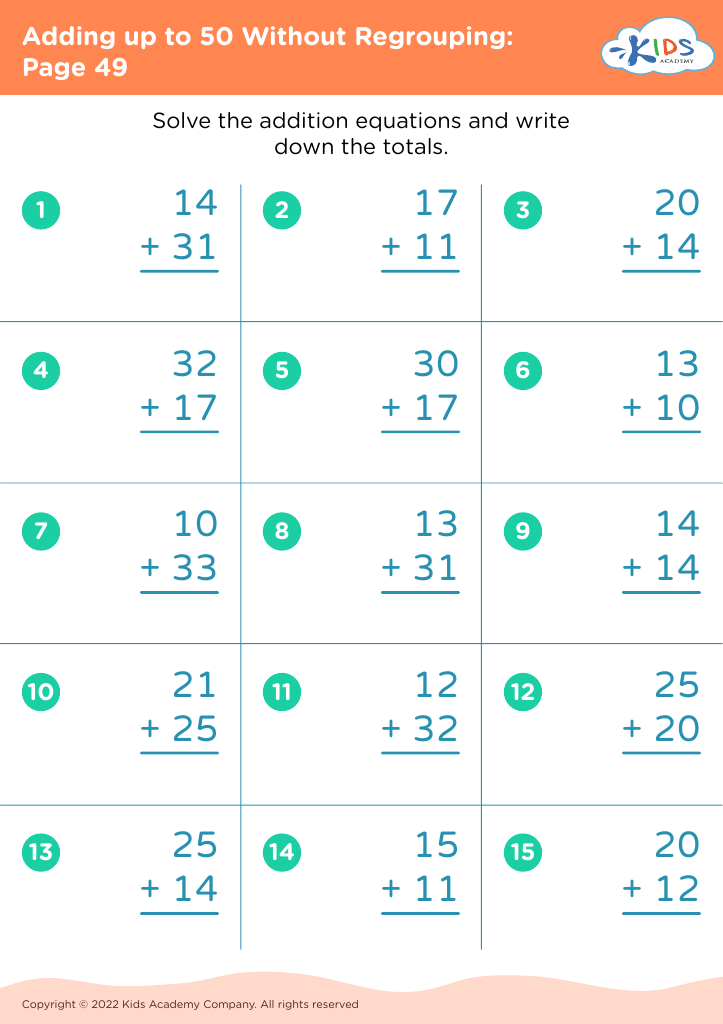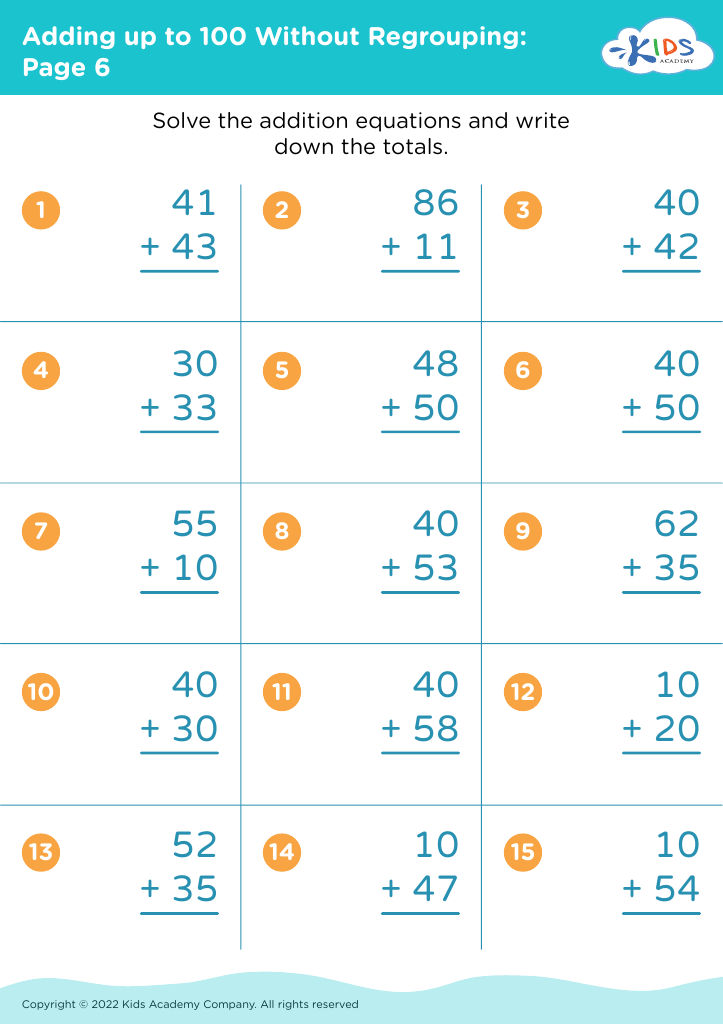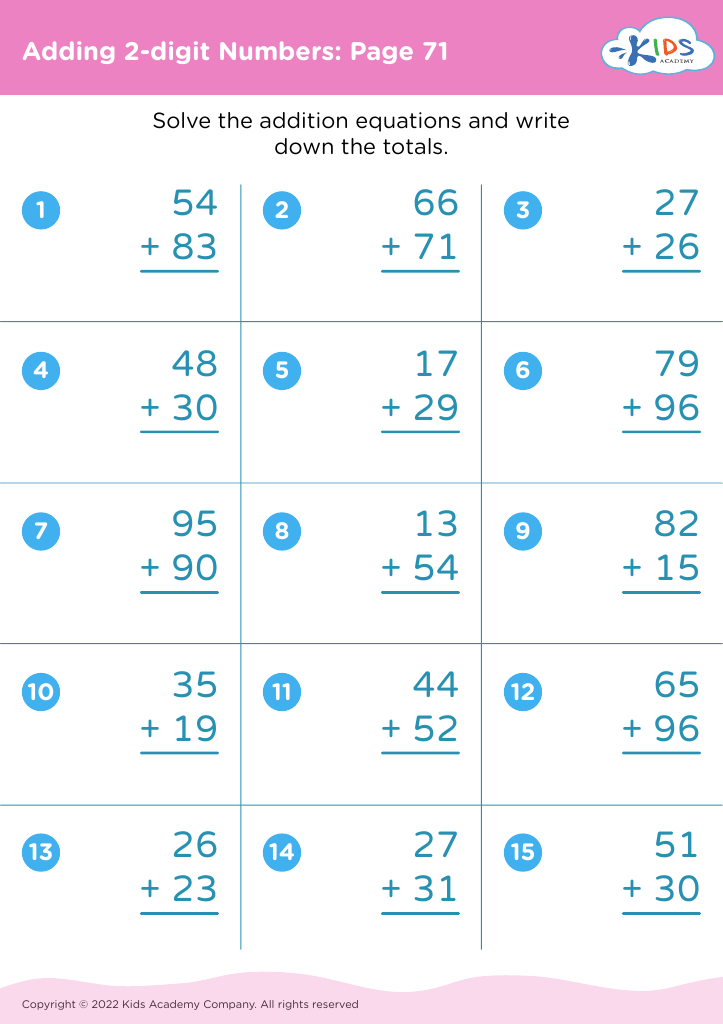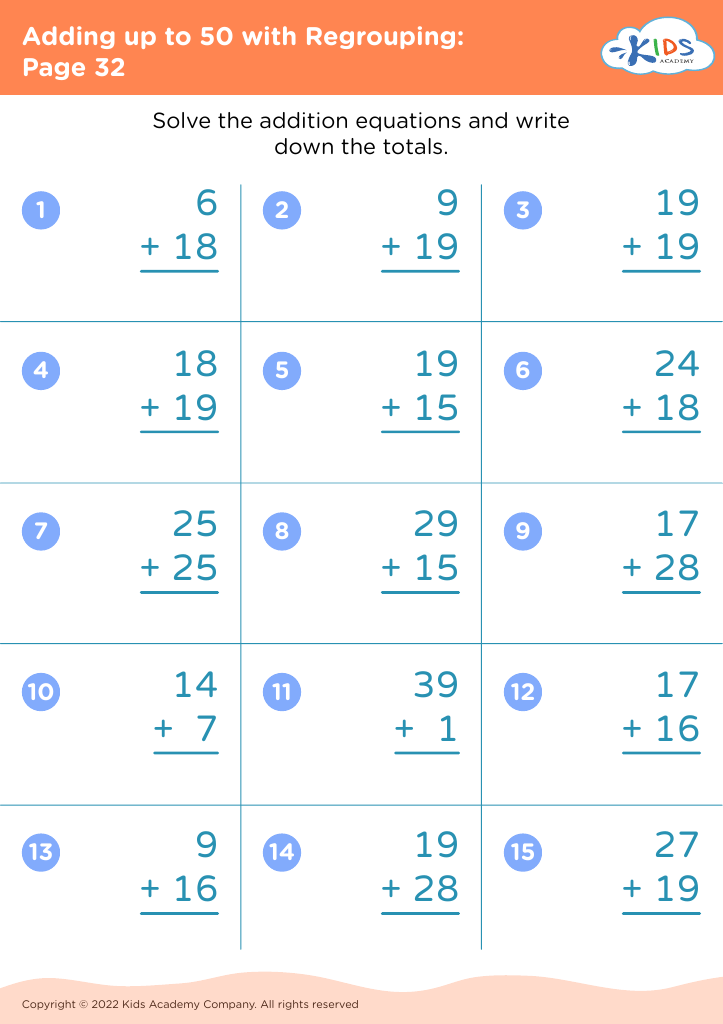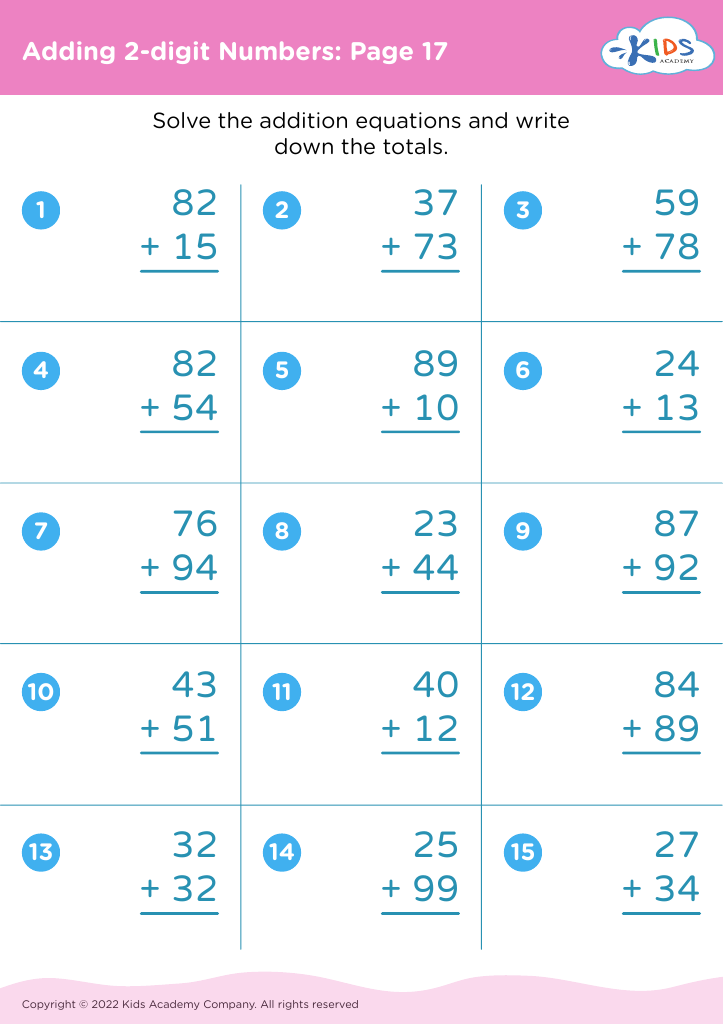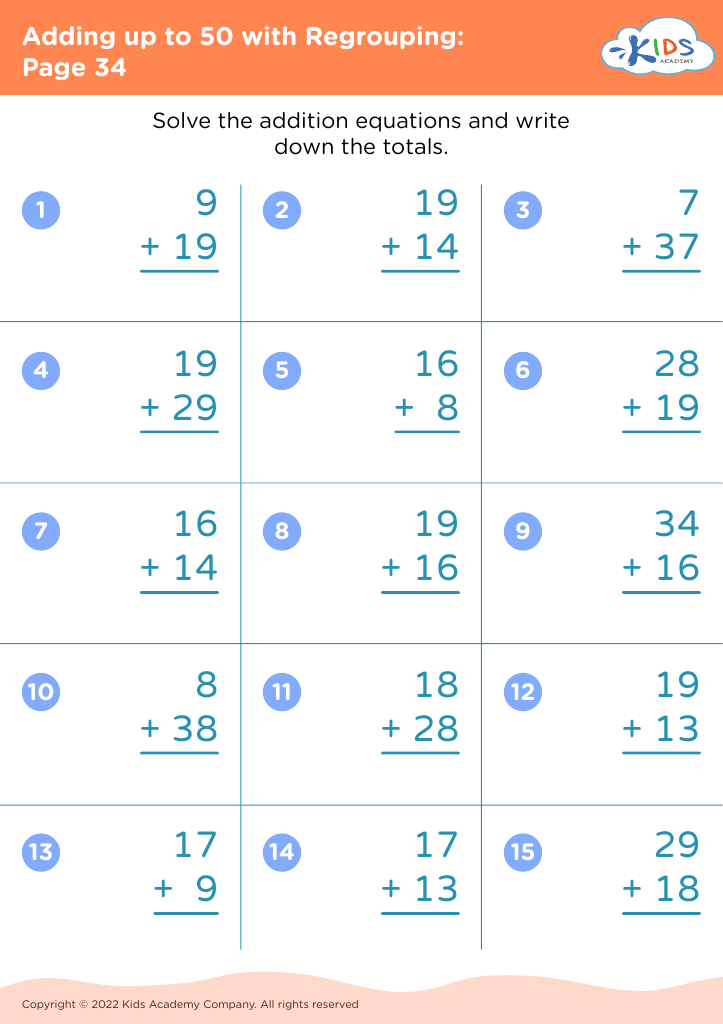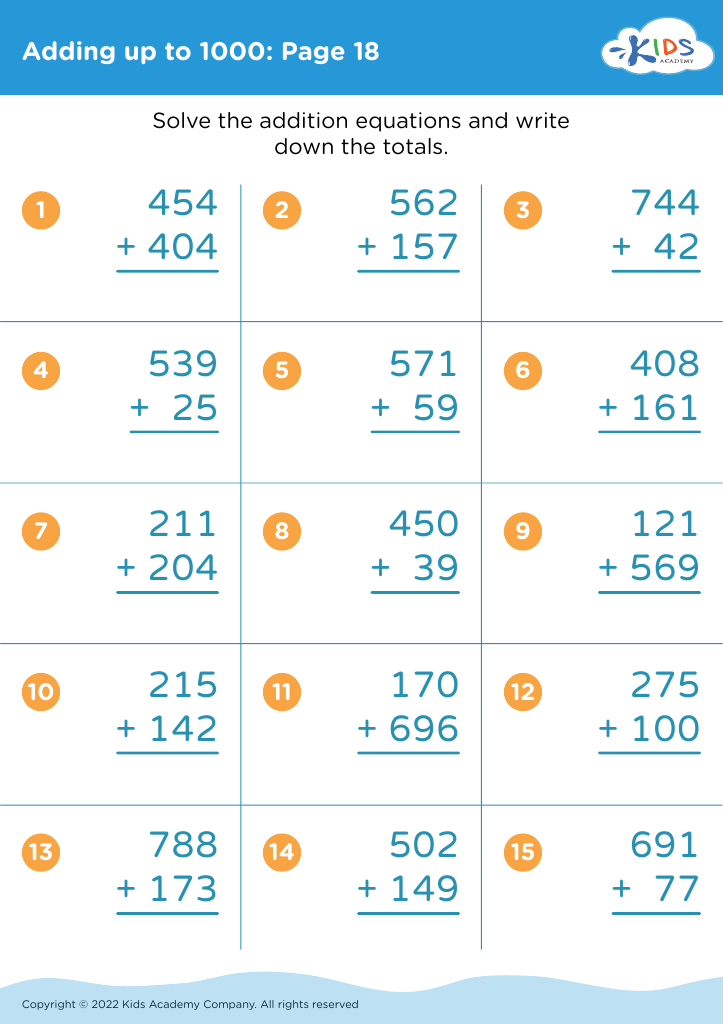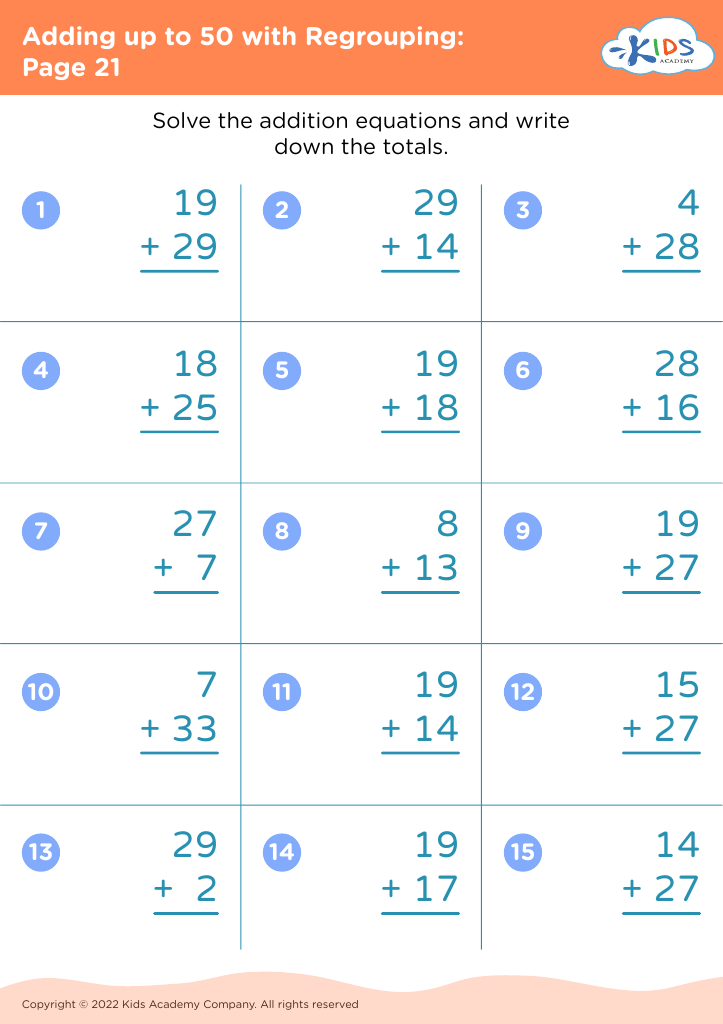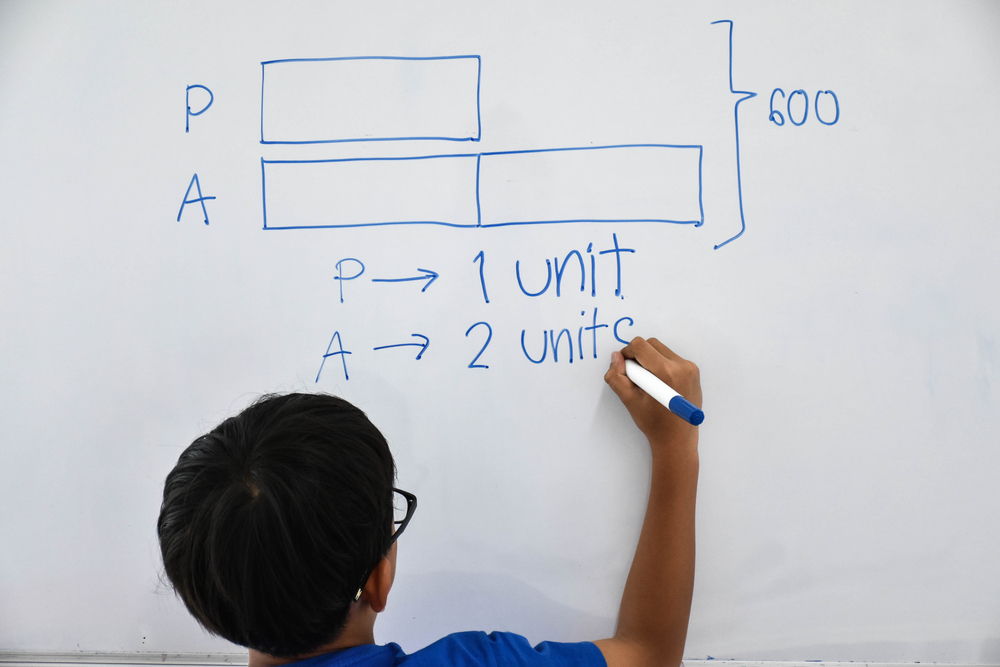Understanding symmetry Worksheets for Ages 8-9
29 filtered results
-
From - To
Explore our "Understanding Symmetry Worksheets for Ages 8-9," designed to enhance children's grasp of symmetry through engaging activities. These thoughtfully crafted worksheets introduce key concepts of symmetry in shapes, patterns, and real-world objects, making learning interactive and enjoyable. They provide a perfect balance of education and fun, encouraging critical thinking and observation skills. Whether your child is identifying lines of symmetry or completing colorful patterns, these worksheets cater to varied learning styles. Download our resources today to support your child's mathematical development and foster a love for geometry, helping them become confident learners as they explore the world of symmetry!
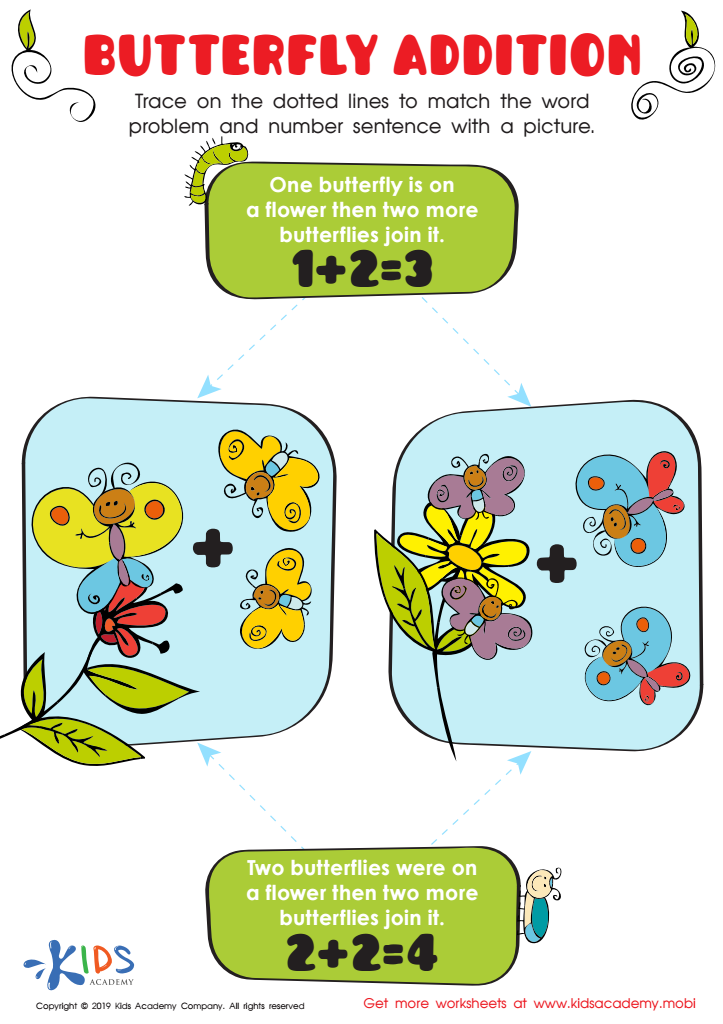

Butterfly Addition Worksheet


Lines of Symmetry Printable
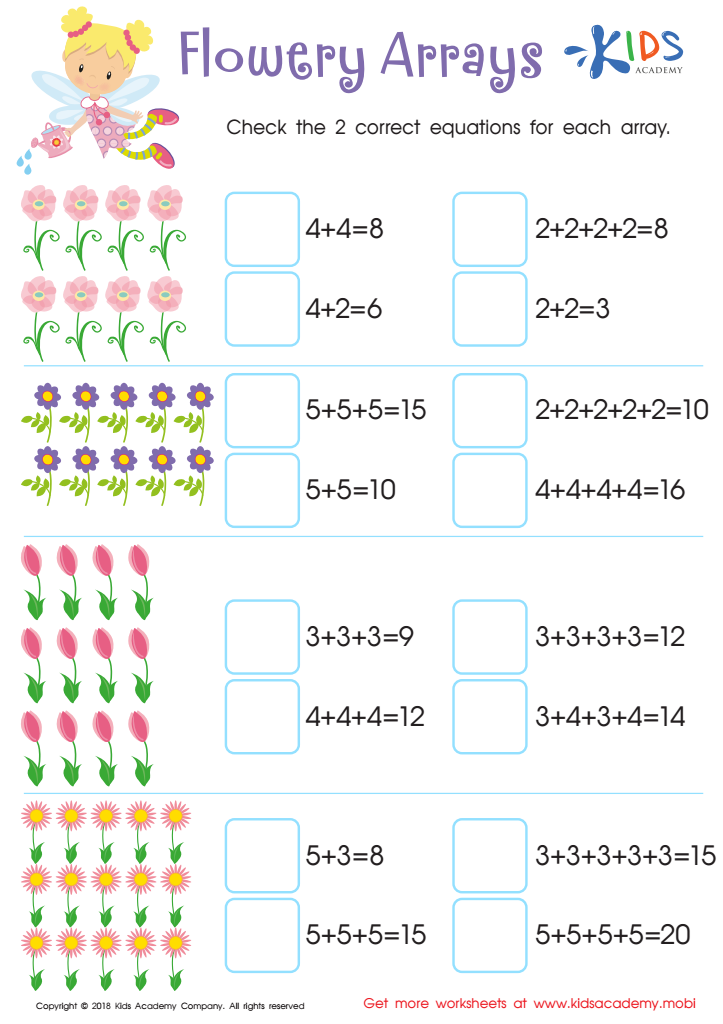

Flowery Arrays Worksheet
Understanding symmetry is essential for children aged 8-9 as it plays a pivotal role in their cognitive and mathematical development. At this age, children begin to refine their problem-solving skills, and grasping symmetry fosters logical thinking and spatial awareness. It recurrently appears in everyday life, from nature—like butterflies and flowers—to architecture and art, making it a tangible concept that connects learning to the real world.
Symmetry exercises promote critical thinking. By identifying and creating symmetrical patterns, children enhance their analytical skills and learn to recognize relationships and transformations. Additionally, this understanding helps develop foundational geometric concepts, an essential part of the math curriculum. Mastery of symmetry can also lead to success in more complex mathematical topics, laying a robust groundwork for future learning.
Moreover, engagement with symmetry nurtures creativity. Art projects involving symmetrical designs or structures encourage self-expression while honing fine motor skills, thus blending art with math.
Overall, emphasizing symmetry boosts children's confidence in mathematics, enhances their problem-solving abilities, and encourages creativity, making it a vital area of focus for parents and teachers during these formative years. Understanding symmetry not only enriches children's education but also cultivates a deeper appreciation for the world around them.
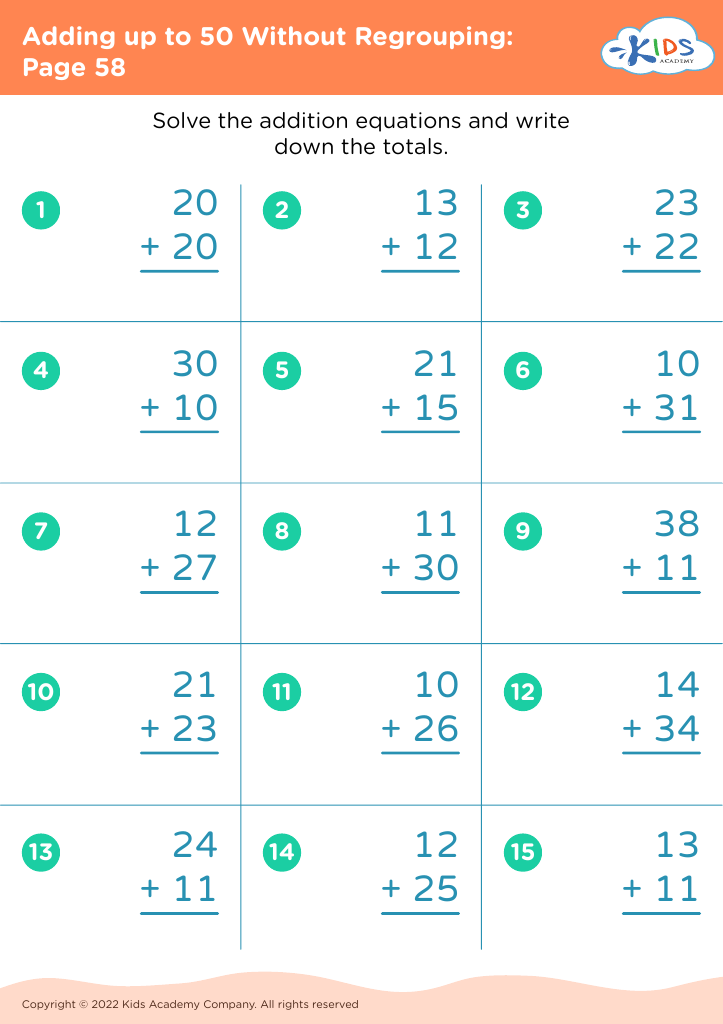


 Assign to My Students
Assign to My Students
